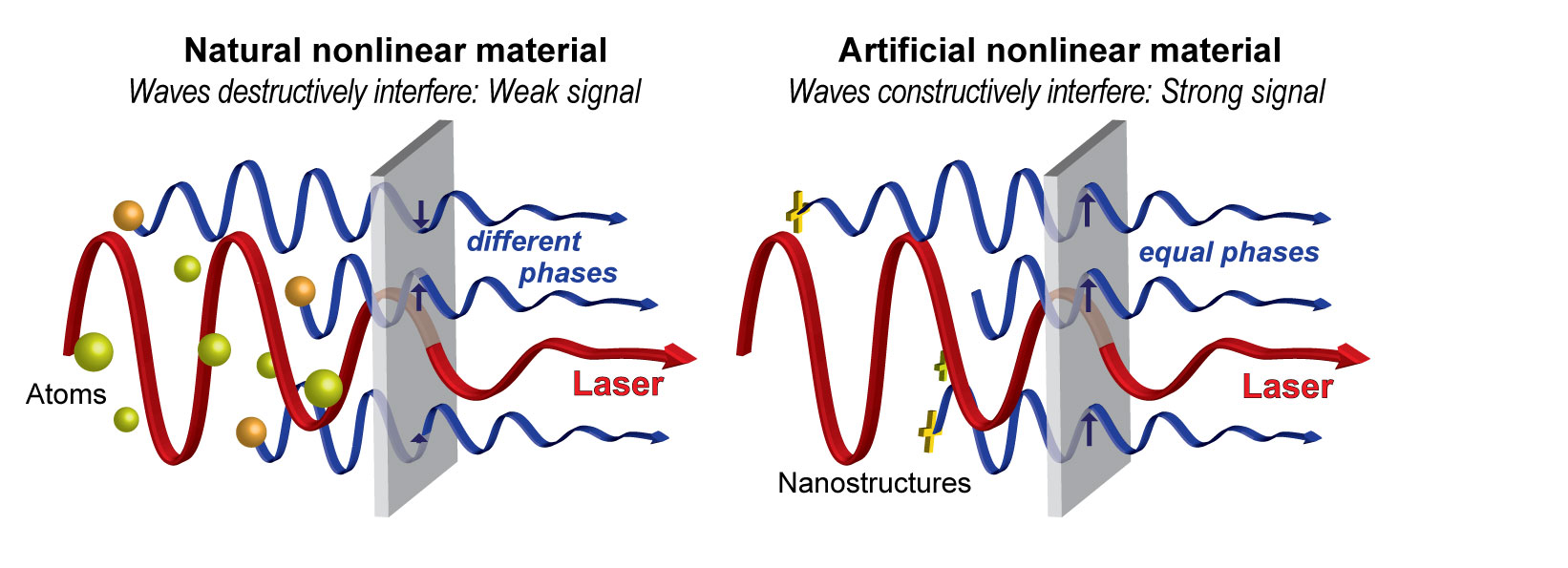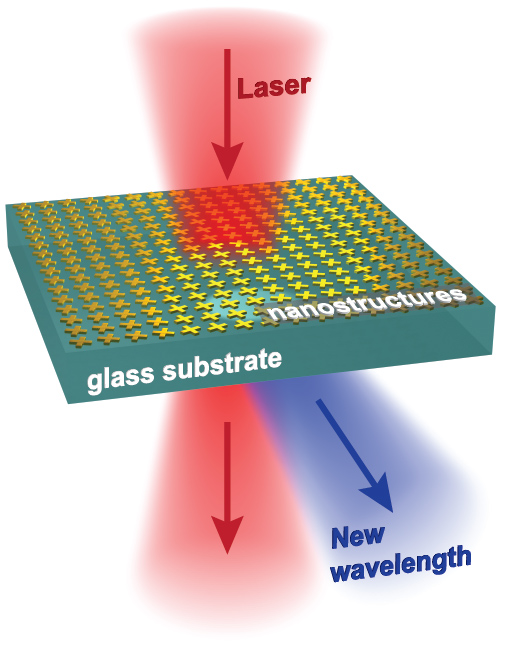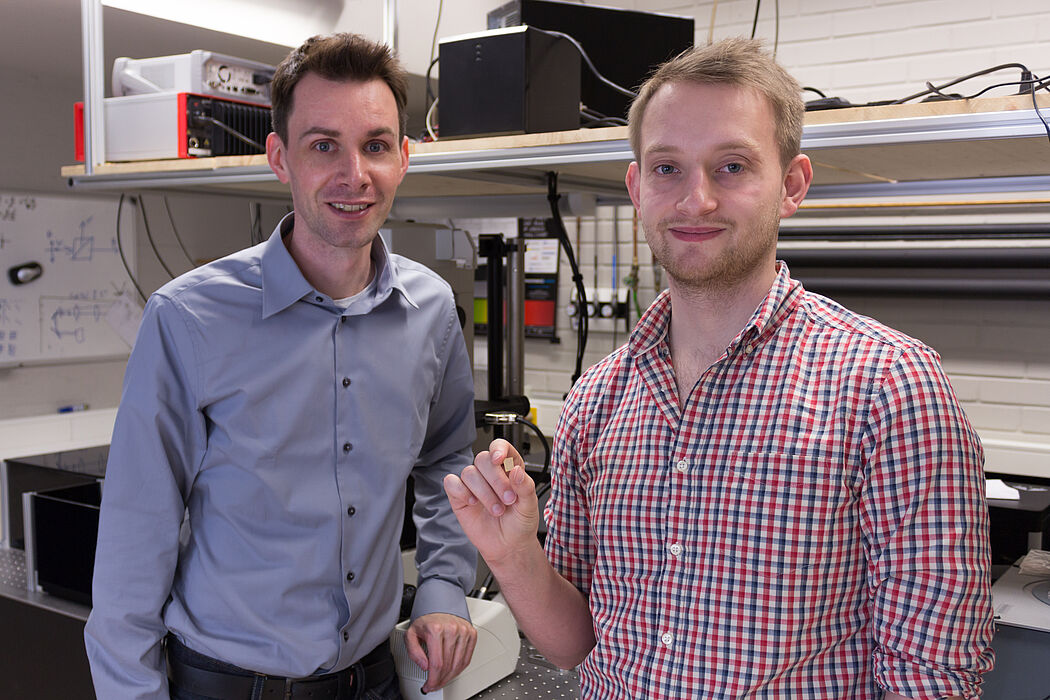Prof. Dr. Thomas Zentgraf and his team (University of Paderborn) has developed in collaboration with researchers from the University of Birmingham a new method to tailor the nonlinear optical properties of artificially structured material. With their new approach completely novel properties of materials can be obtained which cannot be implemented by naturally occurring materials.
“With the implementation of this new concept to influence the nonlinear properties of the material we hope to stimulate the development of smaller and more complex optical devices” explained Prof. Zentgraf. Notably frequency converters play an important role for optical communication technologies and quantum communication in many cases. However, only a few naturally occurring materials are available for this purpose, which even show some limitations for their use in optical devices. Meeting the growing requirements of faster data transfer and processing can be facilitated only by application of light, which is in the scope of the research of nonlinear optics. “In the near future electronic devices might be replaced by all-optical devices that can be potentially much faster than electronics. In this regard, nonlinear optics will play an important role in the next generation optical devices”, expects Prof. Zentgraf.
Controlling the nonlinear effects of a material requires the knowledge of how the nonlinear light in the material will interfere during its generation and propagation process. So far, all naturally occurring materials have the disadvantage that light of different wavelengths propagate at different velocities. This effect interferes with the efficient conversion of light or desired strong light-light interactions. The different propagation velocities result in a delay of the wave propagation which in turn affect the efficiency, e.g., of second harmonic generation. However, a strong interaction over a larger propagation distance is required to run such processes efficiently. The problem could be solved if the phase of the induced nonlinear material polarization could be controlled locally without affecting the linear properties.
The researchers from Paderborn and Birmingham now developed a new concept of phase control over the nonlinear polarizability of the material. Targeting the construction of the material by specific nanoscopic metal structures resulted in spatial delay of the generation of new light during the generation process. The phase control is hereby done simply with the orientation of these nanoscopic structures (also called meta-atoms), which can be easily done during the fabrication process. For example the developed concept would enable an exact phase matching condition for nonlinear optical processes without relying on natural properties as optical birefringence.
Under laboratory conditions the team of Prof. Zentgraf demonstrated this effect already. The surface of a material was modified by small plasmonic nanostructured in a way that the generated light of the second and third harmonic was propagating in a different direction. The exciting light wave, however, remained its direction demonstrating a controlled change only in nonlinear but not in the linear properties of the material. Although in these first experiments only the direction of the light propagation was altered, the same technology can be readily used for tailoring the beam profile and controlling the efficiency of second harmonic generations.
The paper was published online in “Nature Materials” in April 2015. The full text paper can be read here
Prof. Zentgraf is head of the group “Ultrafast Nanophotonics” in the Department of Physics at the University of Paderborn. He is principal investigator in the CRC/TRR 142 (project A 05) and member of the Center of Optoelectronics and Photonics (CeOPP).



